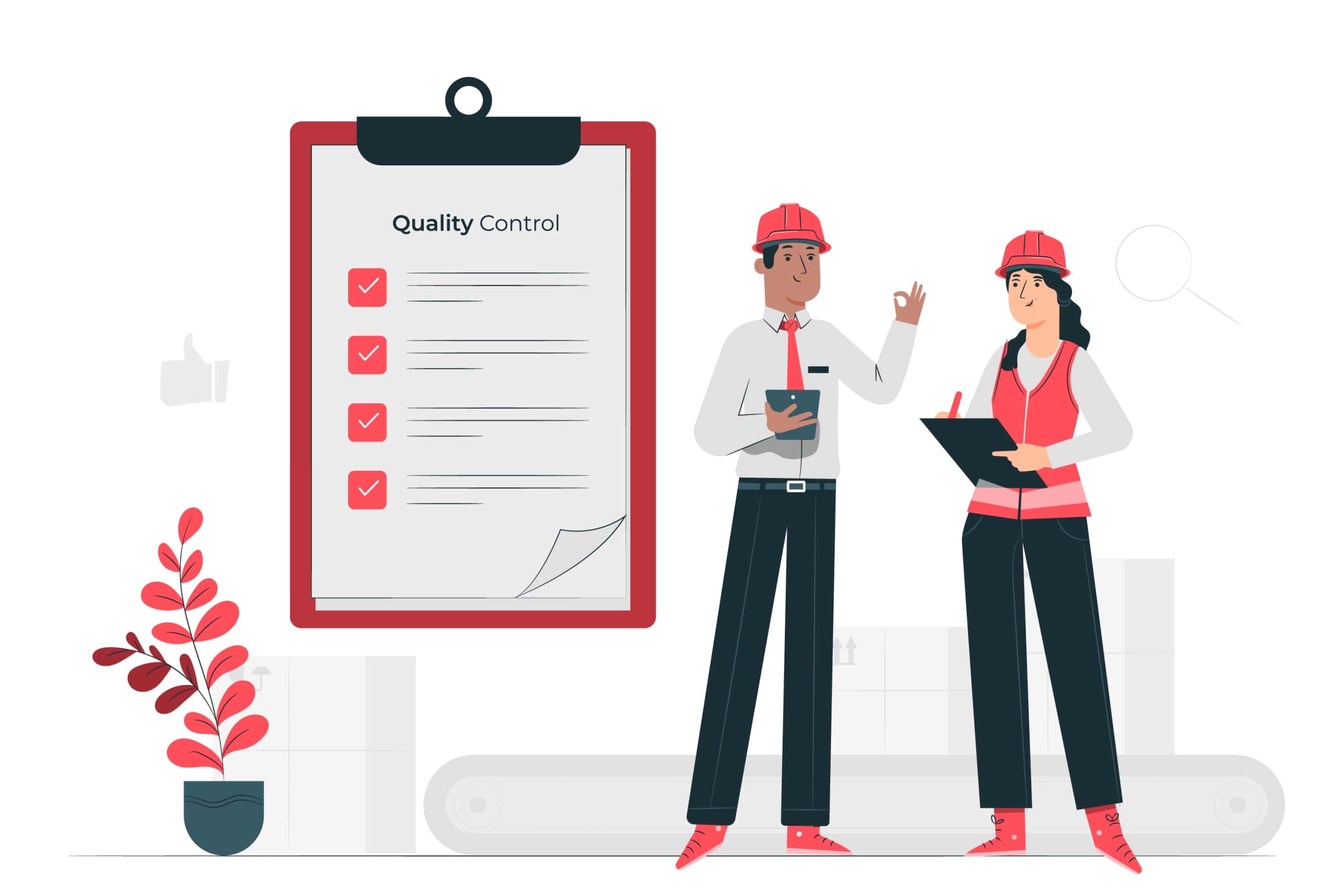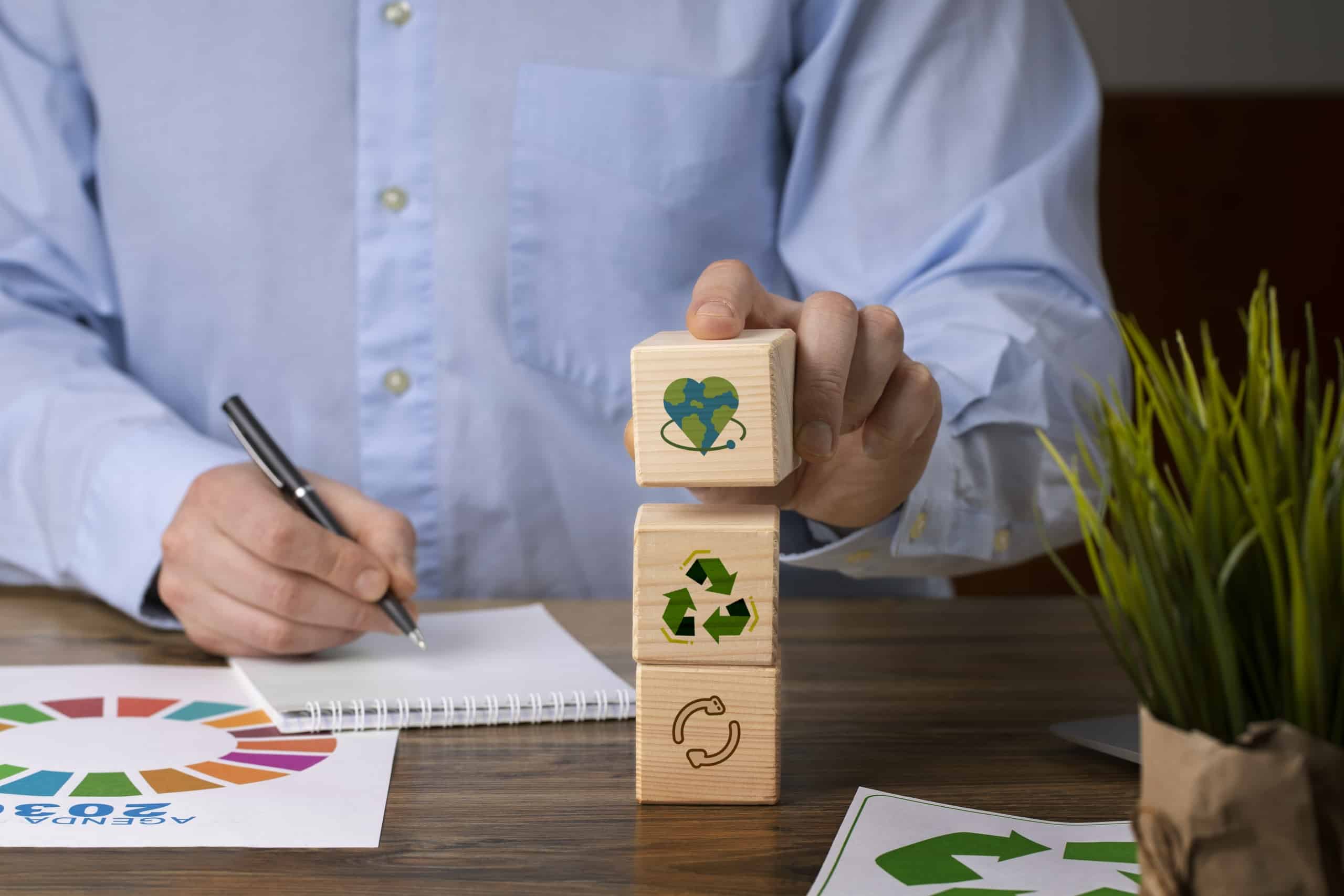The Role of Folding in Wet Wipes Manufacturing
As the link between the processing of raw materials and final packaging, folding is an essential stage in the production of wet wipes. Folding may seem like a simple process, but it has a significant influence on the final product’s quality, usefulness, and customer experience. This step’s precision guarantees that the wipes are both aesthetically pleasing and practical, satisfying the various requirements of various applications including personal hygiene, commercial cleaning, and medicinal usage.
Effect on the Usability of the Product
The consumer’s ability to distribute and use a wipe is directly impacted by how it is folded. Wipes that are neatly folded are simpler to remove one at a time, avoiding waste or hassle. However, improper folding can cause clumping or ripping, which irritates the consumer and lowers the product’s perceived value. Precision folding guarantees a smooth and fulfilling user experience in applications where convenience is crucial, such as baby wipes or disinfection wipes.
Distribution and Retention of Moisture
Folding’s impact on moisture retention is among its most important functions. When wipes are folded correctly, the cleaning or disinfecting solution is distributed evenly, guaranteeing constant performance from each wipe. Furthermore, accurate and compact folding reduces air exposure, which is essential for halting evaporation and preserving the product’s efficacy over time. Wet wipes manufacturers may ensure that their products retain the maximum amount of moisture even after the package has been opened by concentrating on sophisticated folding techniques.
Structural Integrity and Durability
The wet wipes’ mechanical qualities, especially their strength and longevity, are impacted by folding. The wipes are less likely to shred when folded precisely, which guarantees that they keep their structural integrity while being used. Special folding patterns are utilized to increase strength without sacrificing softness or flexibility in applications that demand heavy-duty performance, including industrial wipes. Wipes that withstand heavy use may be produced by manufacturers by managing the tension and alignment during folding.
Flexibility in a Range of Uses
Wet wipes come in different varieties to meet the demands of different consumers, thus folding methods must change correspondingly. For instance, Z-folds or C-folds are favored for bigger packs in industrial or medical environments, whereas interleaved folds are frequently employed for single-dispense wipes in portable packs. Modern folding equipment can rapidly convert different folding patterns, allowing wet wipes manufacturers to create a large variety of goods with little downtime.
Increased Effectiveness of Packaging
Folding also plays a crucial part in enhancing package efficiency. Because precisely folded wipes take up less room, packing options can be small and affordable. Folding is a crucial component of sustainable manufacturing processes as it not only minimizes material waste but also lowers transportation and storage expenses. Additionally, regular folding guarantees that packing machines run efficiently, preventing interruptions that might impact production schedules.
To sum up, folding is a crucial component of wet wipes’ quality, usability, and customer satisfaction—it is much more than just a straightforward mechanical procedure. Wet wipes manufacturers may differentiate themselves in a market that is becoming more and more competitive by investing in cutting-edge folding technologies and procedures that yield higher product performance.
Precision Folding: The Cornerstone of Durability
Durability is a critical performance indicator used in the production of wet wipes that determines the product’s dependability and usefulness. Precision folding, a painstaking procedure that guarantees wipes retain their strength, structure, and usage, is essential to attaining this longevity. Precision folding is essential to improving the product’s overall longevity and enabling it to function well in a range of applications, going well beyond aesthetics.
Consistent Tension for Structural Soundness
The uniform distribution of tension throughout the wipe is guaranteed by precise folding. The chance of rips during use might be increased by misaligned or uneven folds, which can provide weak spots where tension builds up. Precision folding methods, on the other hand, including multilayer or interlocking folds, keep the pressure constant throughout the cloth. This consistency strengthens the wipe’s structural integrity, making it appropriate for demanding applications like medical-grade sanitation or industrial cleaning.
Sturdiness in All Applications
Different wet wipe applications call for different durability levels. Baby wipes, for instance, need to be both soft and flexible while also being robust enough to withstand repeated usage without ripping. Conversely, industrial wipes must withstand demanding cleaning procedures that frequently involve chemicals or abrasive surfaces. By guaranteeing that the wipes maintain their structural integrity without sacrificing their texture or utility, precision folding meets these many demands.
Improved Efficiency under Harsh Circumstances
Durability is important in situations where wipes are subjected to heat, moisture, or frequent use. Through perfect fiber and layer alignment during folding, precision folding techniques reduce structural stress. Even in harsh circumstances, this alignment guarantees that the wipe will stay intact and functional. Disinfecting wipes used in medical settings, for example, need to be able to maintain their shape and functionality over time, which can only be accomplished by folding them precisely and consistently.
Contribution to the Trust of Customers
A product’s durability has a big impact on how confident customers are in it. Dissatisfaction and a decline in brand loyalty might result from wipes that rip or lose their efficacy while being used. This issue is immediately addressed by precision folding, which produces a product that constantly lives up to customer expectations. Durable wipes made with precision folding provide a good impression whether used for home or business purposes, reaffirming the brand’s dedication to excellence.
Creative Folding Methods for Sturdiness
Wet wipes’ endurance has been further improved by new folding techniques brought forth by advancements in folding technology. For example, Z-folds and cross-folds are made to equally distribute tension and stop material deterioration while in use. Furthermore, contemporary folding machines with AI and sensor technology are able to identify and fix folding mistakes instantly, guaranteeing that each wipe satisfies durability requirements.
Sustainability via Longevity
Performance is only one aspect of durability; sustainability is another. Longer-lasting wipes cut down on waste because fewer wipes are needed for each operation. Every wipe is guaranteed to provide optimum usefulness thanks to precision folding, which also makes the production process and customer experience more environmentally friendly. Because they prolong the product’s lifespan and reduce the frequency of disposal, durable wipes also fit well with eco-conscious trends.
In conclusion, the production of wet wipes relies heavily on precise folding for longevity. It creates goods that are dependable, sturdy, and prepared for any challenge by combining cutting-edge methods, inventive machinery, and rigorous quality control. Wet wipes manufacturers who prioritize precise folding not only improve the performance of their goods but also position themselves as industry leaders in providing reliable and long-lasting solutions.
Folding Precision and Moisture Retention
One of the key traits of superior wet wipes is their capacity to retain moisture, which has a direct impact on their efficacy, usability, and shelf life. Although packing and material composition are important considerations, folding accuracy is a crucial but sometimes disregarded aspect. The way a wipe is folded may have a big influence on how well it retains and distributes moisture, which is important for a variety of applications.
The Connection Between Moisture Distribution and Folding
The way moisture is dispersed throughout a wet wipe’s surface is directly impacted by folding accuracy. Uneven layers are produced by irregular or badly done folds, resulting in some places being too wet and others too dry. Particularly for jobs requiring constant wetness, like cleaning or disinfecting surfaces, this imbalance may make the wipe less effective. On the other hand, precise folding guarantees that every layer is positioned uniformly, enabling consistent liquid solution absorption and retention.
Reducing Evaporation with Small Folding
Wipes that are folded correctly provide a compact structure that reduces air exposure. Overexposure to air can cause the moisture to evaporate quickly, especially for wipes kept in partially opened packaging. By minimizing the surface area exposed to air, precision folding methods like interleaving or closely spaced folds assist the wipes in holding onto moisture for extended periods. For items like travel wipes or resealable packs, where moisture retention may make or break the user experience, this functionality is particularly crucial.
Improving Shelf Stability Over Time
Not only does moisture retention affect immediate use, but it also affects how long a pack of wet wipes will continue to work after manufacture. By guaranteeing that the liquid content is uniformly distributed and safely confined inside the folded layers, precision folding helps to maintain shelf stability. This lessens the possibility of spills or leaks inside the box, maintaining the wipes’ quality over time. By utilizing cutting-edge folding technology, producers can guarantee that their goods retain a constant level of quality even after being stored for several months.
Patterns of Folding Developed for Maximum Retention
Optimizing moisture retention requires creative folding patterns. Z-folds and W-folds, for instance, are made to form several overlapping layers that efficiently retain moisture inside the wipe. These designs guarantee that each wipe removed has enough moisture left for usage in addition to preventing liquid from collecting at the package’s bottom. High-moisture wipes, like baby wipes or makeup removal wipes, benefit greatly from these precise folding patterns.
Advanced Machinery’s Function
To achieve unmatched folding precision, modern wet wipes manufacturers rely on cutting-edge gear. These devices position and fold wipes with the least amount of variation possible thanks to sensors and automation. They guarantee that the liquid solution is uniformly absorbed and maintained throughout the product by upholding precise folding conditions. Furthermore, cutting-edge equipment can modify folding patterns to suit various material kinds, improving the capacity to retain moisture.
Moisture Consistency Leads to Customer Satisfaction
Customers need their wet wipes to provide a constant moisture level with each usage, whether they are being used for industrial cleaning or infant care. While too-dry wipes are useless, too-wet wipes might leave residue or make a mess. By ensuring that each wipe pulled satisfies the user’s expectations, precision folding increases satisfaction and promotes brand loyalty. This constancy turns into a powerful selling proposition for producers, setting their goods apart in cutthroat markets.
Retention of Moisture and Sustainability
Because folding precisely maximizes the usefulness of each wipe, it also promotes sustainability. Customers can complete activities with fewer wipes when moisture is evenly distributed and held, which reduces waste. Folding accuracy is a crucial aspect of environmental responsibility as it satisfies customer demand for eco-friendly products and sustainable production methods.
In summary, excellent moisture retention in wet wipes is largely dependent on precise folding. Precision folding raises the product’s overall quality and performance by facilitating equal distribution, reducing evaporation, and improving long-term stability. Prioritizing this element helps manufacturers improve user experiences and solidify their position as dependable, superior wet wipes suppliers.
Innovations in Folding Machinery
Folding equipment is a crucial area of innovation in the rapidly changing wet wipes business. As wet wipes manufacturers try to increase product quality, efficiency, and sustainability, breakthroughs in folding technology are altering how wet wipes are manufactured. These developments allow for the development of distinctive goods that are suited to a wide range of customer demands in addition to improving accuracy and consistency. Below, we analyze the cutting-edge advances in folding machines and their influence on the wet wipes production process.
Real-Time Modifications for Accurate Folding
Cutting-edge sensors and real-time monitoring systems included in contemporary folding machines guarantee unmatched accuracy. These systems automatically adapt to ensure uniformity by detecting even the smallest variations in tension, alignment, or folding angles. Every wipe is folded according to precise specifications thanks to real-time mistake correction, which reduces waste and manufacturing flaws. In large-scale production, when it’s crucial to maintain consistent quality across thousands of pieces, this technique is extremely beneficial.
Modular Folding Mechanisms for Flexibility
The advent of modular folding mechanisms is among the most important developments in folding technology. With no downtime, these systems enable producers to transition between several folding patterns, including interleaved folds, Z-folds, and W-folds. This adaptability makes it possible to produce a variety of wet wipes, from little travel wipes to powerful industrial wipes, without needing different equipment for each kind. Additionally, modular designs make maintenance easier, which lowers operating expenses and boosts productivity.
Artificial Intelligence Integration
By facilitating process optimization and predictive maintenance, artificial intelligence (AI) is transforming folding machines. Artificial intelligence (AI)-powered systems examine past data to anticipate possible problems, including mechanical component wear and tear before they become disruptive. Furthermore, to guarantee constant quality, machine learning algorithms adjust folding settings according to the kind of material, moisture content, and preferred fold pattern. Incorporating AI not only improves accuracy but also decreases downtime and increases machinery longevity.
High-Speed Folding with Accuracy
Innovations in folding machines are helping to close the gap between speed and accuracy, which are sometimes trade-offs. Large quantities of precisely folded wet wipes may now be produced using high-speed folding machines without sacrificing quality. These devices satisfy the rising demand for wet wipes in both the consumer and commercial industries by using coordinated motions and sophisticated servo motors to maintain precision at high rates. For producers hoping to grow production while upholding high standards, this capacity is essential.
Sustainability via Effective Design
Numerous advancements in folding machines are motivated by sustainability. Modern wet wipes machines are designed to decrease material waste by optimizing folding precision and eliminating mistakes. To guarantee that extra materials are recovered or utilized again, several models are equipped with features like material recovery systems and automated trimming. In keeping with international sustainability standards, energy-efficient motors and components are also being used to reduce the carbon impact of production processes.
Personalized Folding Designs for Distinct Items
Wet wipes manufacturers may experiment with different folding patterns that improve the functionality and aesthetics of their products thanks to innovative folding technology. Wipes with multi-layered or embossed designs, for instance, can be folded in various ways to enhance their tactile feel, strength, or absorbency. Customizable folding choices provide manufacturers with additional ways to stand out in a competitive market by appealing to specialized markets or particular customer preferences.
Improved Automation and Interfaces That Are Easy to Use
Modern folding machines are characterized by automation, which streamlines processes and lessens the need for human interaction. These days, machines come with user-friendly software and intuitive touchscreen interfaces that make operation and troubleshooting easier. Without requiring a lot of technical know-how, operators can easily change settings, keep an eye on performance, and obtain real-time information to optimize efficiency.
Space-efficient Compact Designs
Compact folding machines have grown in popularity since industrial facilities frequently face space limits. These wet wipes manufacturers take up less space while providing the same degree of accuracy and performance as bigger ones. For small and mid-sized wet wipes businesses who want to increase output without making significant facility changes, compact designs are very beneficial.
Sustainability Through Precision
Sustainability is now more than just a catchphrase; it is a fundamental idea that propels innovation in a variety of sectors, including the production of wet wipes. In this regard, attaining sustainability objectives depends critically on manufacturing processes being precise. Accuracy guarantees that resources are used effectively, waste is kept to a minimum, and environmental effects are lessened. The future of producing environmentally friendly wet wipes is being shaped by the emphasis on accuracy in everything from material optimization to energy reduction.
Reducing Material Waste
Material waste is greatly decreased by using precision in the folding and cutting procedures. Every inch of material is used effectively, preventing extra trims or misaligned cuts, when folding machinery is operated according to strict specifications. In addition to reducing manufacturing costs, this careful material management also lessens the environmental impact of raw material waste. Wet wipes manufacturers may retain product quality while aligning their operations with sustainability aims by optimizing the use of recycled or biodegradable materials.
Utilizing Liquid Solutions Effectively
Liquid solutions, such as moisturizers or disinfectants, must be dispersed uniformly throughout the wet wipes production process to prevent oversaturation or waste. Each wipe will absorb just the right quantity of solution for best results thanks to precision folding. By doing this, less liquid is used excessively, saving resources and lowering production costs. Additionally, accurate dispensing keeps leaks from happening during packing, extending the product’s shelf life and efficacy while also promoting sustainability.
Production Energy Efficiency
Generally speaking, precision-oriented machinery is made to run more energy efficiently. Smart algorithms, real-time monitoring, and improved motor systems are used by advanced folding and cutting machines to minimize energy usage during manufacturing. In order to reduce energy waste, contemporary production lines are also outfitted with technologies like predictive maintenance and automated cutoff during idle periods. By reducing the carbon impact of wet wipes production, these advances assist wet wipes manufacturers in meeting international energy conservation criteria.
Minimizing the Effect of Transportation
Wet wipes that are compact and perfectly folded need less packaging, which leads to smaller, more effective shipment quantities. Lower emissions during distribution and fewer transportation trips result from this package size decrease. Additionally, each pack of wipes is guaranteed to have the same size and weight thanks to precision folding, which maximizes transportation effectiveness and further reduces environmental impact.
Improving the Durability of Items
Extending the shelf life of wet wipes requires careful folding and sealing procedures. Wet wipes manufacturers lessen the possibility of product spoiling or early drying by making sure that every wipe is folded and packed to maintain moisture. Because of their longer lifespan, products need to be replaced less frequently, which results in less waste and more environmentally friendly consumer behavior.
Encouragement of Eco-Friendly Materials
The production of wet wipes using compostable and biodegradable materials is growing in popularity. When working with these environmentally friendly materials, accuracy is crucial since they frequently call for certain folding methods to preserve their functionality and integrity. Waste can result from improper handling of these materials during the folding or cutting process, which can impair their usefulness. The total sustainability of the product is supported by precision technology designed to deal with sustainable substrates, which guarantees that these materials are processed without compromising.
Increasing Customer Confidence in Sustainable Practices
Customers are becoming more conscious of how the items they consume affect the environment. Eco-conscious consumers are drawn to wet wipes that exhibit careful design, economical material use, and low waste. In addition to lessening the impact on the environment, precision in production shows a brand’s dedication to sustainability. Customers’ trust and loyalty are increased by this transparency, which raises demand for sustainable goods.
Long-Term Financial Savings
Economic gains and sustainability are aligned through precision manufacturing. Wet wipes manufacturers may save a substantial amount of money by cutting waste, saving energy, and making the most use of their resources. These savings may be used to fund additional sustainability projects, including creating new eco-friendly goods or switching to renewable energy sources. This cycle of innovation and efficiency builds a solid basis for long-term, steady growth.
Precision’s Role in Sustainability’s Future
Precision’s contribution to sustainability will only grow as technology develops. Wet wipes production is about to transform because of emerging trends including AI-driven process optimization, IoT-enabled monitoring, and advancements in recyclable materials. Through the incorporation of these developments into precision-driven processes, manufacturers may attain unprecedented levels of sustainability and efficiency.
To sum up, sustainability via accuracy is a potent strategy that strikes a balance between operational excellence and environmental responsibility. Wet wipes manufacturers may lessen their environmental impact while producing high-quality, environmentally friendly goods that meet customer demands and international sustainability goals by concentrating on accuracy in every facet of wet wipes manufacturing, from material handling to energy use.
Future Trends in Folding Technology
1. Artificial Intelligence (AI) Integration
By allowing wet wipes machines to learn, adapt, and improve folding operations in real-time, artificial intelligence is poised to revolutionize folding technology. Artificial intelligence (AI)-powered systems can examine production data, identify irregularities, and make modifications to guarantee accurate folding with the least amount of waste. By anticipating and averting mechanical problems before they arise, this skill not only improves product quality but also decreases downtime. Folding technology will become more self-sufficient and effective as AI develops.
2. Folding Systems Powered by IoT
Connected folding machines that can interact with other production line equipment are becoming possible because of the Internet of Things (IoT). Real-time information on performance indicators including speed, accuracy, and material utilization is provided via IoT-enabled equipment. Wet wipes manufacturers may make data-driven choices, streamline processes, and remotely monitor production with this information. Additionally, these intelligent solutions enable smooth technology integration, resulting in production settings that are completely automated and networked.
3. Adaptable Folding Designs
Customization will be a major component of future folding technology, enabling wet wipes manufacturers to design distinctive folding patterns that are suited to particular customer requirements. Cutting-edge equipment will include modular designs that allow for fast changeover between folding methods, including embossed patterns, Z-folds, and interleaved folds. Because of this versatility, wet wipes manufacturers will be able to distinguish their products in the market and target specialized markets like heavy-duty industrial wipes or luxury beauty wipes.
4. Innovations Driven by Sustainability
Folding technology is developing to handle environmentally friendly materials more precisely as sustainability becomes a major focus. Certain folding methods are frequently necessary to preserve the integrity of recycled, biodegradable, and compostable materials. The handling of these materials will be optimized by sophisticated mechanisms in future folding machines, which will save waste and improve product performance. Additionally, folding technology will be more ecologically friendly thanks to energy-efficient motors and parts.
5. Accurate High-Speed Folding
High-speed folding technology is advancing due to the need for increased production numbers without sacrificing quality. To accomplish quicker folding rates with precise precision, future machines will make use of sophisticated servo motors, coordinated motions, and real-time monitoring. Wet wipes manufacturers looking to increase output while preserving quality will be served by these technologies, especially in cutthroat industries where speed is essential.
6. Using Augmented Reality (AR) in Training and Maintenance
In folding technology, augmented reality is becoming a useful tool for operator training and maintenance. AR interfaces may minimize mistakes and downtime by assisting workers with machine settings, troubleshooting, and maintenance activities. An operator using AR glasses, for example, may see visual overlays that show machine parts that need to be adjusted, simplifying and expediting complicated processes.
7. Systems for Predictive Maintenance
With its ability to guarantee continuous output and increase machine lifespans, predictive maintenance is revolutionizing folding technology. Predictive systems may spot possible problems, including folding blade wear and tear or misaligned parts before they cause failures by employing sensors and artificial intelligence to continuously monitor machine components. This preventative strategy lowers maintenance expenses and prevents unplanned downtime.
8. Space-Efficient and Compact Designs
Compact folding machines are a major area of future attention since manufacturing facilities sometimes have limited space. Wet wipes manufacturers will be able to increase their production capacity without having to extend their physical infrastructure because of these machines’ great performance in a smaller footprint. For small and mid-sized enterprises trying to streamline their processes, compact designs are especially alluring.
9. Improved Accuracy for Complicated Items
The accuracy of folding technologies will increase in the future to support more intricate product designs. For instance, precise alignment is necessary to preserve the functioning and integrity of multi-layered wipes or wipes with integrated textures when folding patterns are used. Wet wipes manufacturers will be able to construct these intricate designs with more accuracy thanks to advancements in folding technology, increasing the range of products they offer.
10. Optimization Based on Data
The development of folding technology will heavily rely on data analytics. Advanced sensor-equipped machines will gather and examine information on manufacturing speed, material consumption, and folding precision. Process optimization, waste reduction, and general efficiency enhancement are all possible with this data. Additionally, real-time analytics can help businesses stay competitive by enabling them to react swiftly to shifting market needs.
The Path Ahead
The combination of sustainability, efficiency, and innovation characterizes the future of folding technology. Wet wipes manufacturers will have the means to create premium, bespoke, and environmentally friendly wet wipes with previously unheard-of speed and accuracy as they embrace these new trends. In addition to improving manufacturing capacities, these developments will put brands in a better position to satisfy changing customer wants and the demands of a vibrant global market.
Wet wipes manufacturers may gain a competitive edge and establish new standards for wet wipes manufacturing quality, efficiency, and sustainability by using the newest folding technology.







